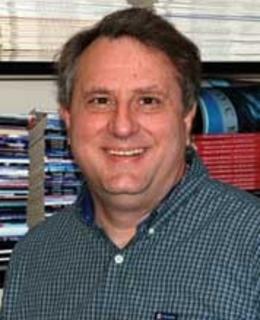
Steven Zimmerly
Positions
Contact information
Background
Educational Background
B.A. Chemistry, Goshen College, 1986
Doctor of Philosophy Biophysics, Yale University, 1992
Research
Areas of Research
Group II introns are novel genetic elements with two remarkable properties. They are catalytic RNAs (ribozymes) that can self-splice in the absence of protein. They are also retroelements that encode a reverse transcriptase and spread selfishly to new sites in genomes. In addition to these properties, group II introns are of great evolutionary interest because they are considered to be the ancestors of spliceosomal introns, which are the major introns in humans.
In studying group II introns, we make much use of the public sequence databases, in order to gain information about the overall distribution of introns, the variations in their structures, and inferred mobility properties. This information provides a foundation for evaluating the diversity of the introns and for choosing introns to characterize experimentally. For example, one identified subclass (bacterial class C, or IIC) was observed in genome sequences to be always located after transcriptional terminators, which implies a mobility behavior of inserting at the end of transcription units. This property was investigated and confirmed, for the B.h.I1 intron of Bacillus halodurans, and represents a new strategy for a selfish DNA to avoid inserting into coding sequences and damaging its host (Robart et al., 2006). Our experimental work continues to focus on the IIC introns, an understudied subclass of group II introns.
Research interests include: 1) Characterization of the self-splicing properties of the B.h.I1 intron; 2) Investigation of mobility properties of B.h.I1, both in vitro and in vivo; 3) Exploration of the structural diversity of the intron RNAs; 4) Evolutionary analyses of group II introns to help infer their history.
Courses
| Course number | Course title | Semester |
|---|---|---|
| BCEM 413 | Laboratory Techniques II | Winter 2023 |
| CMMB 451 | Molecular Analysis of Biological Systems | Winter 2023 |
Awards
- GREAT Supervisor Award, Faculty of Graduate Studies. 2018
- AHFMR Senior Scholar, 2003
- AHFMR Scholar, 1998
More Information
Publications
- Simon, D. and Zimmerly, S. (2008). A diversity of uncharacterized retroelements in bacteria. Nucleic Acids Research 36: 7219-7229.
- Simon, D. M., Clarke, N. A. C., McNeil, B. A., Johnson, I., Pantuso, D., Dai, L., Chai, D. and Zimmerly, S. (2008). Group II introns in Eubacteria and Archaea: ORF-less introns and new varieties. RNA 14: 1704-1713.
- Dai, L.,* Chai, D.,* Gu, S-Q., Gabel, J., Noskov, S. Y., Blocker, F. J. H., Lambowitz, A. M. and Zimmerly, S. (2008). A three-dimensional model of a group II intron RNA and its interaction with the intron-encoded reverse transcriptase. Molecular Cell 30: 472-485. *Equal authorship.
- Robart, A.R., Seo, W. and Zimmerly, S. (2007). Insertion of group II intron retroelements after intrinsic transcriptional terminators. PNAS 104: 6620-6625.
- Toor, N., Robart, A.R., Christianson, J. and Zimmerly, S. (2006). Self-splicing of a group IIC intron: 5’ exon recognition and alternative 5’ splicing events implicate the stem-loop motif of a transcriptional terminator. Nucleic Acids Research 34: 6461-6471.
- Hausner, G., Olson, R., Simon, D., Johnson, I., Sanders, E. R., Karol, K. G., McCourt, R. M. and Zimmerly, S. (2006). Origin and evolution of the chloroplast trnK (matK) intron: a model for evolution of group II intron RNA structures. Molecular Biology and Evolution 23: 380-391.
- Doulatov, S., Hodes, A., Dai, L., Mandhana, N., Liu, M., Deora, R., Simons, R.W., Zimmerly, S. and Miller, J.F. (2004). Tropism switching in Bordetella bacteriophage defines a family of diversity-generating retroelements. Nature 431: 476-481.
- Lambowitz, A.M. and Zimmerly, S. (2004). Mobile group II introns. Annual Review of Genetics 38: 1-35.
- Robart, A., Montgomery, N.K., Smith, K.L. and Zimmerly, S. (2004). Alternative splicing of a group II intron in the bacterium Bacillus anthracis and principles for 3’ splice site selection. RNA 10: 854-862.
- Dai, L. and Zimmerly, S. (2003). ORF-less and RT-encoding group II introns in archaebacteria, with a pattern of homing into related group II intron ORFs. RNA 9: 14-19.
- Dai, L., Toor, N., Olson, R., Keeping, A., and Zimmerly, S. (2003). Database for mobile group II introns. Nucleic Acids Research 31: 424-426. [This database was highlighted in Science in 2004; Leslie, M. Molecular Outtakes. (2004). Science 303: 1115.]
- Toor, N. and Zimmerly, S. (2002). Identification of a family of group II introns encoding LAGLIDADG ORFs typical of group I introns. RNA 8: 1373-1377.
- Dai, L. and Zimmerly, S. (2002). The dispersal of five group II introns among natural populations of E. coli. RNA 8: 1294-1307.
- Dai, L. and Zimmerly, S. (2002). Compilation and analysis of group II intron insertions in bacterial genomes: evidence for retroelement behavior. Nucleic Acids Research 30: 1091-1102.
- Toor, N., Hausner, G. and Zimmerly, S. (2001). Coevolution of group II intron RNA structures with their intron-encoded reverse transcriptases. RNA 7: 1142-1152.
- Zimmerly, S., Hausner, G. and Wu, X. (2001). Phylogenetic analysis of group II intron ORFs. Nucleic Acids Research 29: 1238-1250.
Are you the profile owner?
Login to edit.
